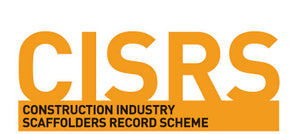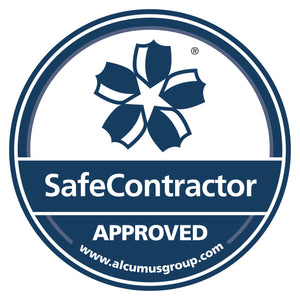19 February, 2024
Scaffold structures are constantly exposed to the outside elements, meaning they are at mercy of changing weather conditions at any given time. Of course, these weather conditions can sometimes be particularly unfavourable - such as those experienced recently thanks to Storm Henk. What do such conditions mean for scaffolding, though?
With high speed winds and heavy rainfall, scaffolding becomes dangerous to work on. Read on below as we discuss the risks storms pose when it comes to scaffold structures, along with the recommendations on how to mitigate these.
The Risks
Safety at Height Concerns
Working at height already poses a number of risks in and of itself, however when strong winds are concerned these increase significantly.
Being up high, workers are usually less sheltered than they are on the ground, which means they are exposed to stronger winds. Whilst it sounds almost comical since it’s so hard to imagine actually happening, winds of this strength do have the potential to blow workers over and cause significant injuries. This is even more dangerous if the correct working from height safety measures are not being implemented.
Furthermore, torrential rainfall can cause scaffold boards to become slippery and cause a worker to lose their footing, which could also result in injury.
Loose Material
Any loose material that is being kept on the scaffolding - such as scaffold boards or scaffold tubes being used to erect more scaffolding, or tools and materials being used for the project at hand - has the potential to be blown off the structure in stormy conditions.
This poses a threat to both workers and pedestrians. If anyone is out in such conditions and walking past the scaffold structure, then any loose materials that have been left on the structure can turn into hazardous projectiles that could cause significant injury if they were to hit someone. Similarly, they could cause damage to any nearby cars were they to hit these.
The Recommendations
Stop Active Work
It’s recommended that any active work on scaffolding is stopped when wind speeds are above 23mph. This is in the best interest of workers, who would otherwise be put at a safety risk.
In periods of stormy weather, it’s always best to check the weather forecast before commencing any work, so that a reasonable and responsible decision can be made to determine whether or not work is safe to carry out, with conditions being regularly monitored throughout the day.
Secure Tools & Materials
Ensure that any tools and materials are securely fixed to or removed from the scaffold structure and stored away, so that they don’t pose a risk to those below.
While working on scaffolding in high winds is dangerous, the scaffolding itself should be otherwise unaffected if constructed correctly and professionally. Here at TJR Scaffolding Ltd, we’ve got all the products and accessories you need for your commercial scaffolding. Get in touch with us today to discuss the hire options available to you.







































